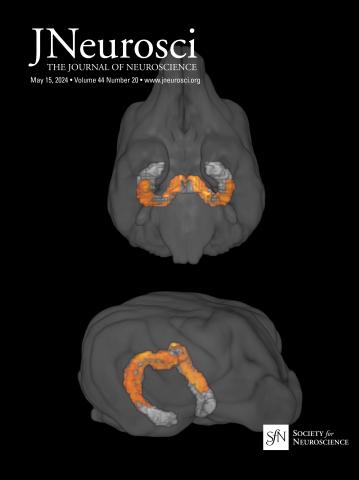Neural and behavioral correlates of individual variability in rat helping behavior: a role for social affiliation and oxytocin receptors.
IF 4.4
2区 医学
Q1 NEUROSCIENCES
引用次数: 0
Abstract
A prosocial response to others in distress is increasingly recognized as a natural behavior for many social species. While prosocial behavior is more frequently observed towards familiar conspecifics, even within the same social context, some individuals are more prone to help than others. In a rat helping behavior test where animals can release a distressed conspecific trapped inside a restrainer, most rats are motivated and consistently release the trapped rat ('openers'), yet around 30% do not open the restrainer ('non-openers'). To characterize the difference between these populations, behavioral and neural markers were compared between opener and non-opener rats in males and females. Openers showed significantly more social affiliative behavior both before and after door-opening compared to non-openers. Oxytocin receptor mRNA levels were higher in the nucleus accumbens (NAc), but not the anterior insula, of openers. Several transcription control pathways were significantly upregulated in openers' NAc. Chemogenetically inhibiting paraventricular oxytocin neurons did not significantly impair helping, but did reduce sociality measures, indicating that helping does not rely solely on oxytocin signaling. Analysis of brain-wide neural activity based on the immediate-early gene c-Fos in males revealed increased activity in openers in prosocial brain regions compared to non-openers. These include regions associated with empathy in humans (insula, somatosensory, cingulate and frontal cortices), and motivation and reward regions such as the NAc. These findings indicate that prosocial behavior may be predicted by affiliative behavior and activity in the prosocial neural network and provide targets for the investigation of causal mechanisms underlying prosocial behavior.Significance Statement Prosocial behavior is observed in many social species, including rodents, yet the determinants underlying why some animals help and others do not is poorly understood. Here, we show behavioral and neural differences between prosocial and non-prosocial pairs in a rat helping behavior test, with increased social interaction and nucleus accumbens oxytocin receptor gene expression in animals that helped.大鼠帮助行为的个体变异的神经和行为相关:社会关系和催产素受体的作用。
对处于困境中的他人的亲社会反应越来越被认为是许多社会性物种的一种自然行为。虽然亲社会行为更常被观察到是针对熟悉的同类,即使在相同的社会背景下,一些个体比其他人更倾向于帮助。在一项老鼠帮助行为测试中,动物可以释放被困在约束器中的痛苦同种,大多数老鼠都有动力并持续释放被困的老鼠(“打开者”),但大约30%的老鼠不打开约束器(“非打开者”)。为了描述这些种群之间的差异,比较了雄性和雌性开瓶鼠和非开瓶鼠的行为和神经标记。与不开门的人相比,开门的人在开门前后都表现出更多的社会依恋行为。打开者伏隔核(NAc)的催产素受体mRNA水平较高,而前岛没有。几个转录控制通路在开子NAc中显著上调。化学遗传学上抑制室旁催产素神经元并没有显著损害帮助,但确实减少了社会性措施,表明帮助并不仅仅依赖于催产素信号。基于立即早期基因c-Fos对男性全脑神经活动的分析显示,与非开启者相比,开启者在亲社会大脑区域的活动增加。这些区域包括与人类共情相关的区域(脑岛、体感皮层、扣带皮层和额叶皮层),以及像NAc这样的动机和奖励区域。研究结果表明,亲社会行为可以通过亲社会神经网络中的亲社会行为和亲社会活动来预测,并为探究亲社会行为的因果机制提供了目标。亲社会行为在包括啮齿类动物在内的许多群居物种中都可以观察到,然而,为什么有些动物会提供帮助,而另一些动物却不提供帮助的决定因素却知之甚少。在这里,我们在大鼠帮助行为测试中显示了亲社会和非亲社会对之间的行为和神经差异,帮助动物的社会互动和伏隔核催产素受体基因表达增加。
本文章由计算机程序翻译,如有差异,请以英文原文为准。
求助全文
约1分钟内获得全文
求助全文
来源期刊

Journal of Neuroscience
医学-神经科学
CiteScore
9.30
自引率
3.80%
发文量
1164
审稿时长
12 months
期刊介绍:
JNeurosci (ISSN 0270-6474) is an official journal of the Society for Neuroscience. It is published weekly by the Society, fifty weeks a year, one volume a year. JNeurosci publishes papers on a broad range of topics of general interest to those working on the nervous system. Authors now have an Open Choice option for their published articles
 求助内容:
求助内容: 应助结果提醒方式:
应助结果提醒方式:


